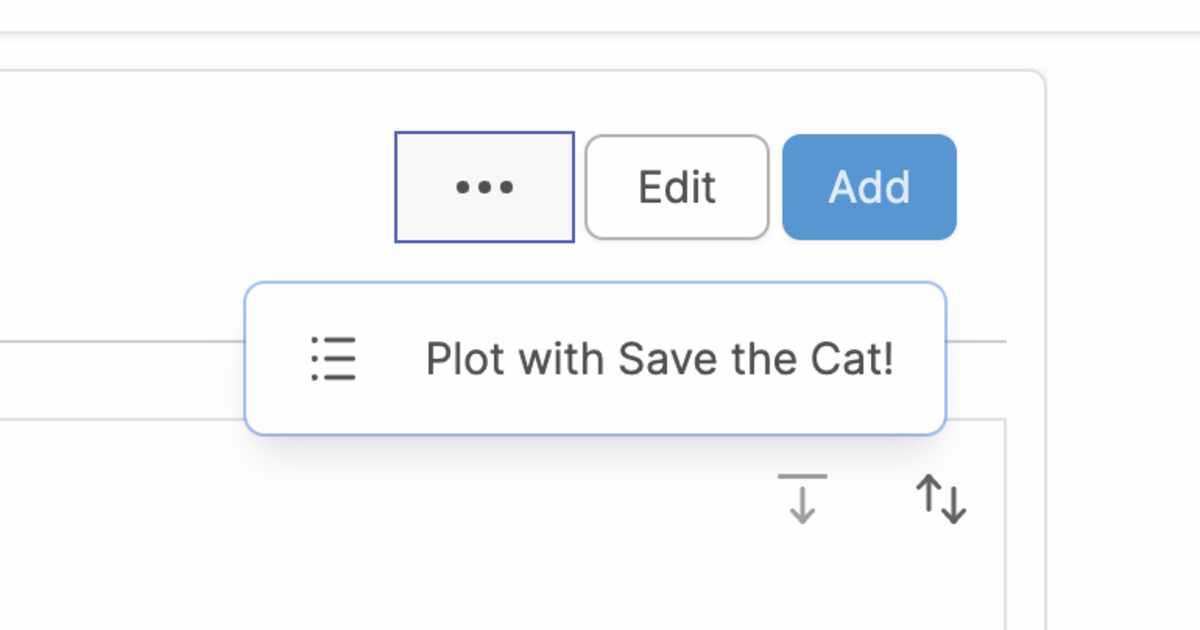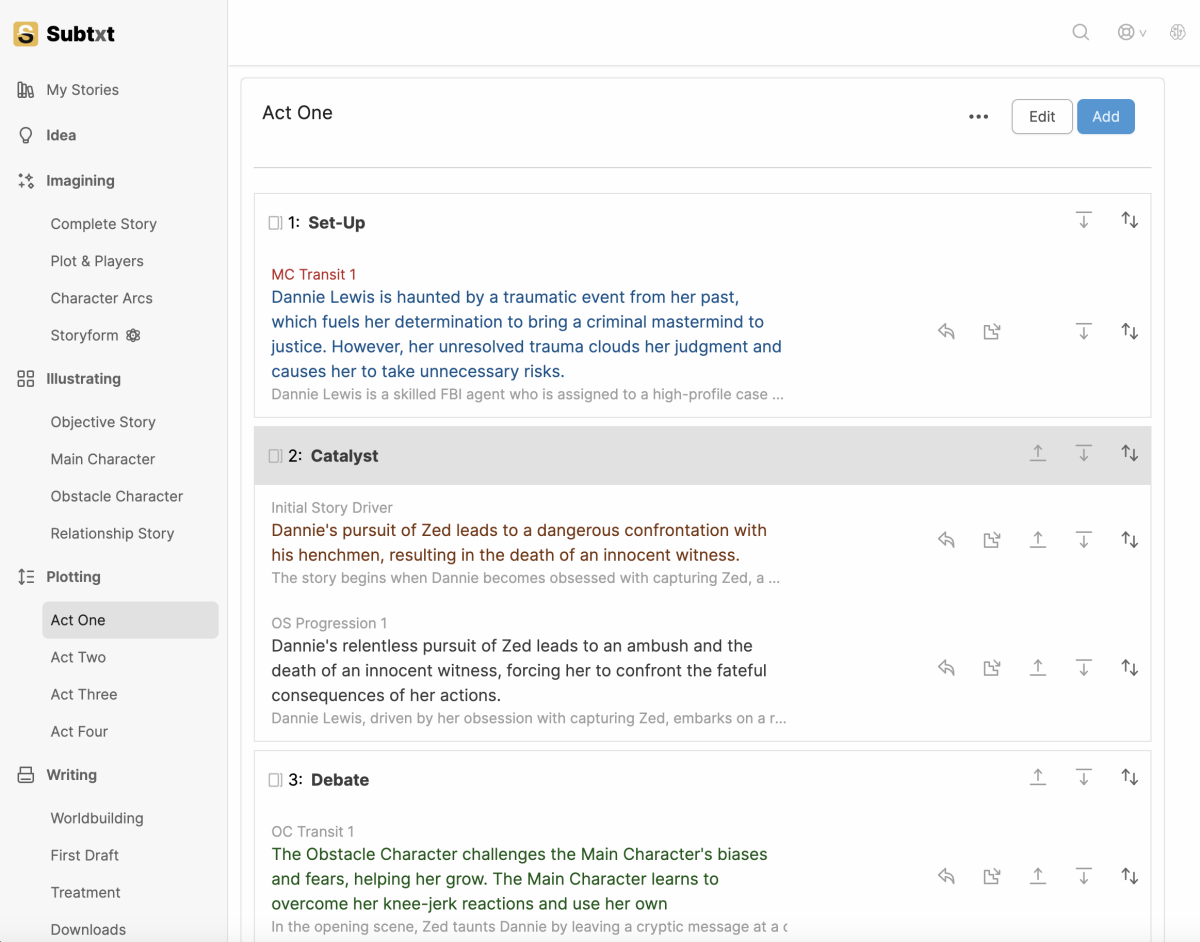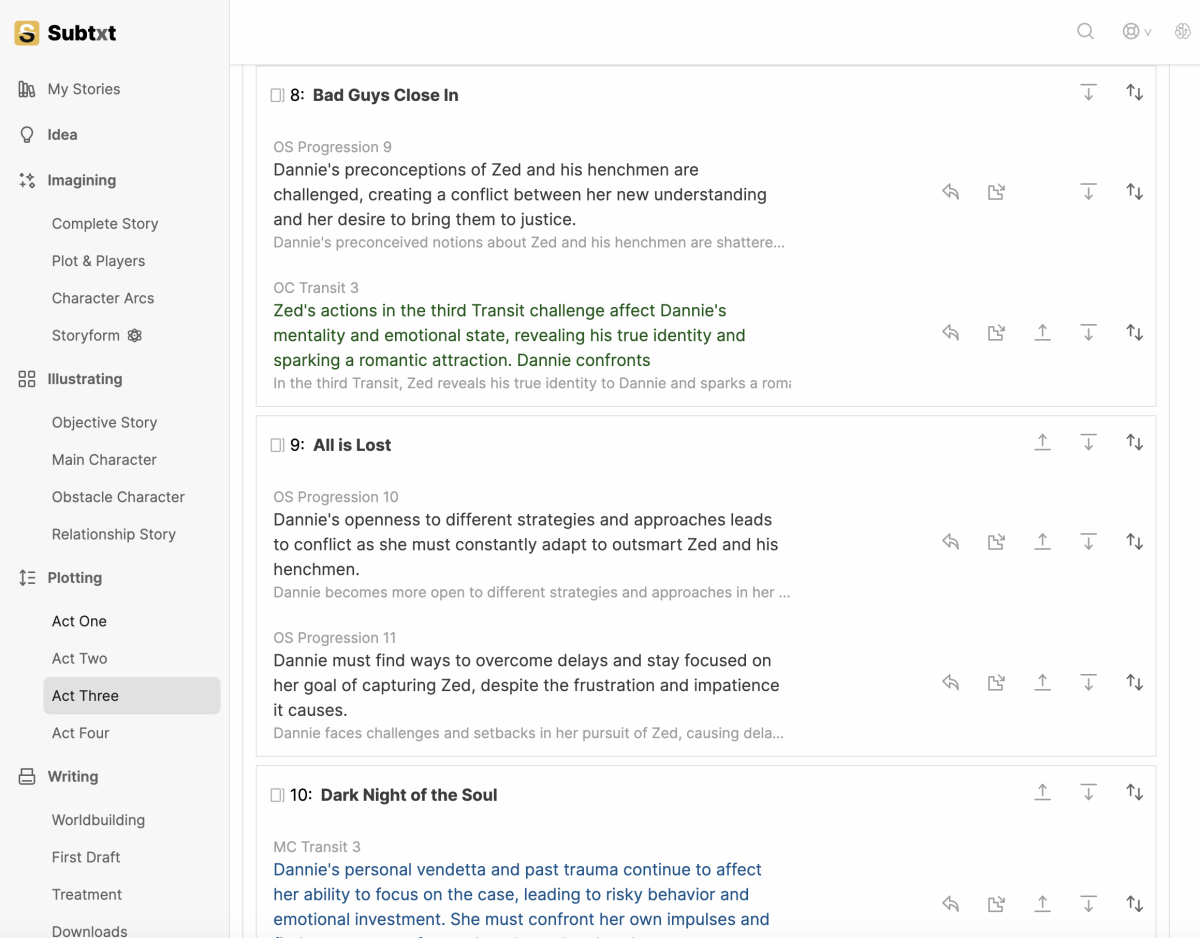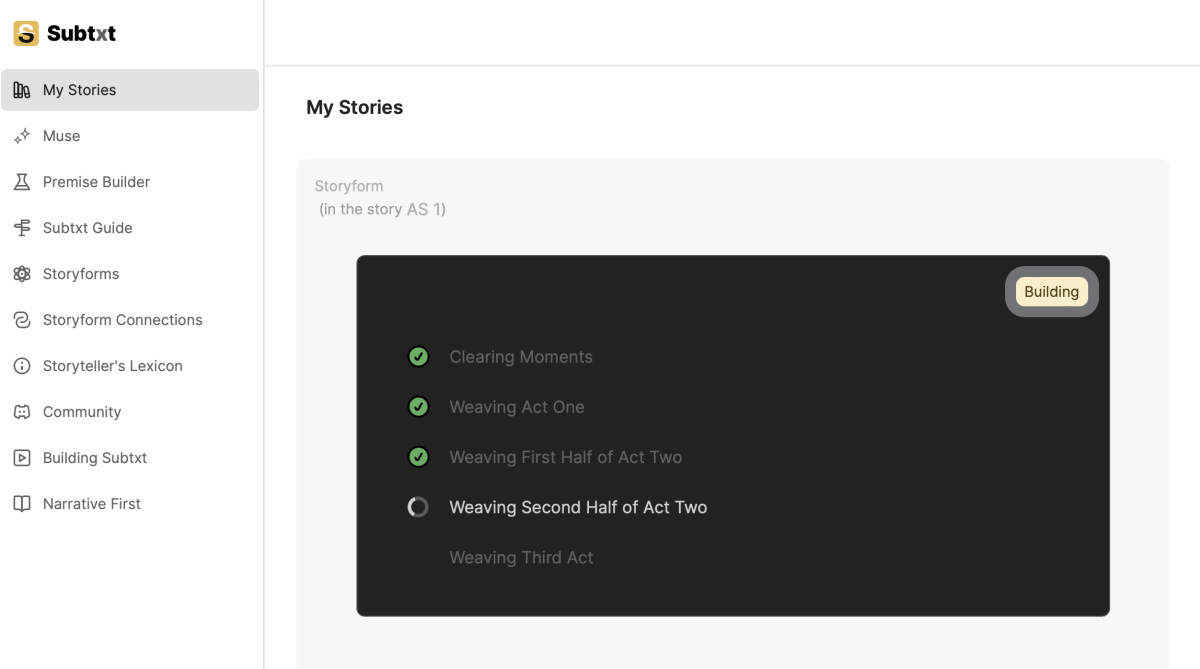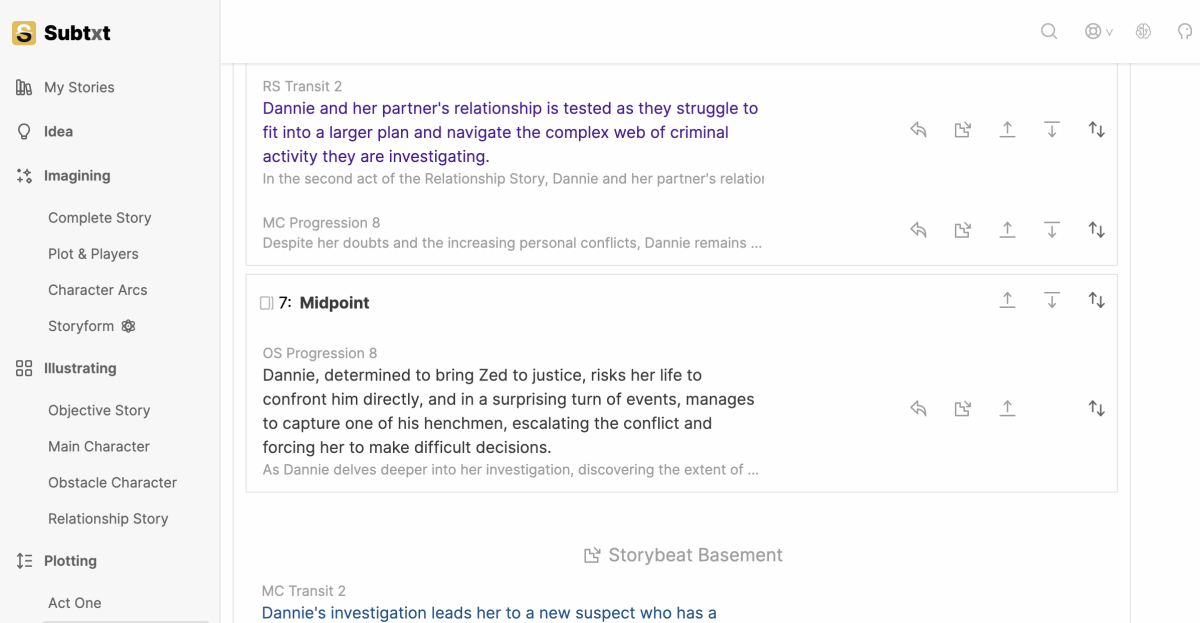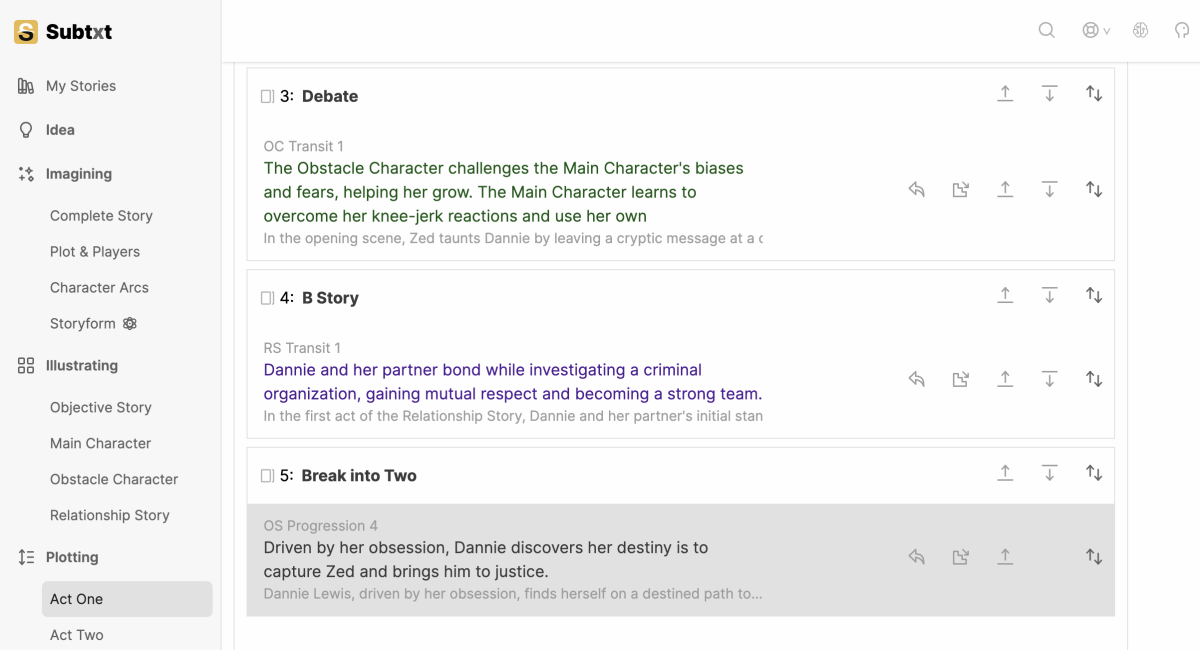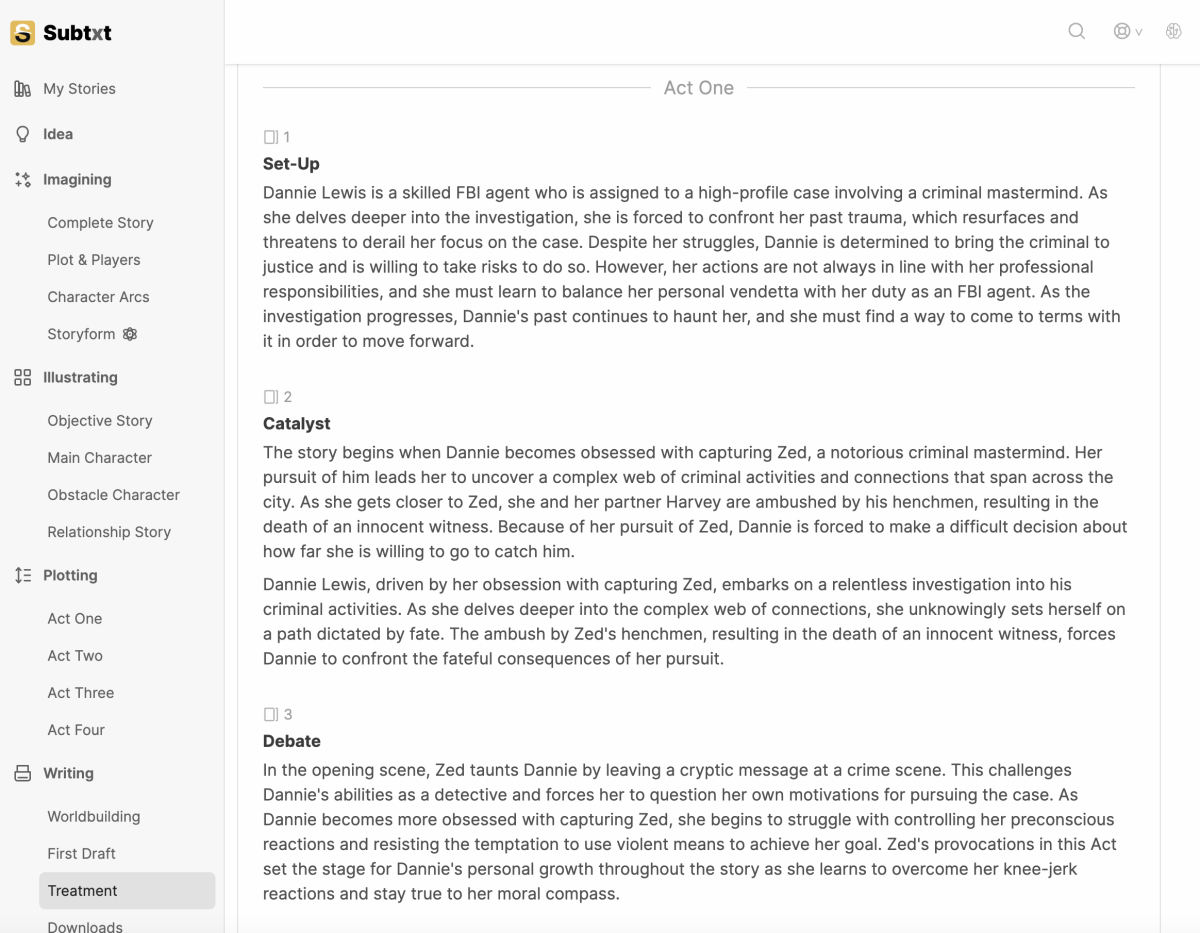Plotting to Templates in Subtxt
Enhancing your storytelling with structured plot templates
For all storytellers who've struggled to convert a surge of ideas into a structured plot, there's some valuable news. A new feature has been added to the Subtxt platform: Plot with Templates. This feature facilitates the integration of the Four Throughlines into a standardized format, simplifying your storytelling process considerably. The inaugural template added to this feature is the widely popular "Save the Cat!" sequence of beats.
This feature may not provide the complete recipe for crafting a narrative, but it certainly equips you with substantial elements to enrich the Storybeats you've painstakingly created and delineated in Subtxt. To utilize this feature, you need to navigate to Plotting -> Act One, click on the three-button dropdown at the top, and select "Plot with Save the Cat!" This prompts Subtxt to execute the complex task of weaving all Four Throughlines into this template, saving you the intricate detailing and organizing.
After the plotting process, you have the option to review the content within each Act individually, or you can go to Treatment and download the entire outline. This is ready for you to transfer into your chosen writing app and start penning down your narrative. Furthermore, we are excited to announce that additional templates, such as the Hero's Journey and more, are under development. If you have a preferred template or have designed one yourself, feel free to share it with us.
Why Templating in Subtxt?
To be clear, there is no inherent Subtxt/Dramatica “structure” when it comes to weaving the events of your story. The Storybeats of a Storyform do not directly correlate to Sequences, Scenes, Chapters, etc. The dividing line between these “moments” of a story is completely arbitrary and ultimately meaningless (Please see Forget the Cat, Save Yourself! and Not Everything is a Hero's Journey). You can take any narrative developed with Subtxt (Four Throughlines) and filter it through any template and the story will maintain its resonance.
Where you decide to start and stop a scene is inconsequential to the meaning delivered by a Storyform. What that means is that you can layer on top any sort of arrangement of sequences—like a “Save the Cat” or a “Hero’s Journey"—and the intent of the Storyform remains the same. Those templates are subjective interpretations of what story structure is—meaning they are biased and opinionated in how they arrange and present the elements a story. Subtxt is the extreme opposite: Subtxt is objective.
Due to this inherent difference between the nature of a structure in Subtxt and the "structure" in a template like "Save the Cat", you could develop a Storyform in Subtxt and--when finished--press a button to see what that story looks like presented with the arrangement of sequences found in Save the Cat. You could then hit another button and see it arranged with the Hero’s Journey. In both cases the end result will be the same exact story, because in the end those “structures” are just chapter headings. You could come up with the "Banana-Avocado" method and do the same. These structure "templates" are just ways of drawing lines around true narrative structure--and we're hoping this ability for a Storyform to easily wear different clothes will make it easier to appreciate the delineation between the two approaches.
Filtering Meaning through a Template
When Plotting, Subtxt does not alter the storytelling or work you have already done. The feature simply creates Moments in each Act that match the template in question, and then weaves the work you already have done into those various Moments.
We don’t need to alter anything you’ve done before because these other approaches are failed attempts to get to narrative structure from the audience/character/subjective point-of-view. Since we already have a highly accurately and deeply set of meaningful Storybeats when developing from a Storyform, it’s a simple task to weave those Beats into those Moments knowing what they were trying to achieve in terms of relevancy.
For instance, the Midpoint of a story in the "Save the Cat" template correlates with the middle (third) Story Driver. If that Driver exists, Subtxt will create a Moment titled “Midpoint” and then attach the Story Driver to that Moment—unless the Objective Story Transit 2/Progression 4 also exists, and then we use that instead. We don’t need to add or alter anything else within these Storybeats because that middle Story Driver (Progression) has always signified the center turning point in the Objective Story Throughline.
Another example would be the "B Story", which is Snyder’s attempt at describing the Relationship Story Throughline. Beyond the problematic blending of both OC and RS concerns into a single concept “blob”, there exists another problem within the context of Plotting. For a story to be structurally and temporally complete, the RS Throughline must be illustrated prior to the appearance of the second Story Driver—or what is known in "Save the Cat" as the “Break into Two.” In the original book, the “B-story” came after this dividing line between the first and second Acts of a story (noting that in later editions/sequels, the exact order accommodates this reality of narrative).
In Subtxt, we make sure that the “B-Story” moment is plotted before the final Story Driver of Act One (Break into Two) in order to maintain the integrity of the narrative.
For the remaining sequences in the "Save the Cat" template it becomes a simple task of identifying which parts of a Storyform each step was trying to attain.
Sometimes it’s easy, as with the Midpoint or B Story example above. Other times, it’s less apparent: the “Fun and Games” is just a big blob between the Second and Third Story Driver. In that case, Subtxt creates a Moment titled “Fun and Games” and then deftly weaves Transits and Progressions into a potential order within that Moment. The Author can then go in and move those Storybeats around if needed.
In the end, this Plotting to templates feature is ultimately for your agent, or editor, writing group, or friends. Since they’re not very likely to understand the intricacies between a Progression or a Pivotal Element, this feature allows you to present your hard work in a familiar and digestible pattern (giving you the extra time to get back to the fun part: the writing!).😃
Download the FREE e-book Never Trust a Hero
Don't miss out on the latest in narrative theory and storytelling with artificial intelligence. Subscribe to the Narrative First newsletter below and receive a link to download the 20-page e-book, Never Trust a Hero.


